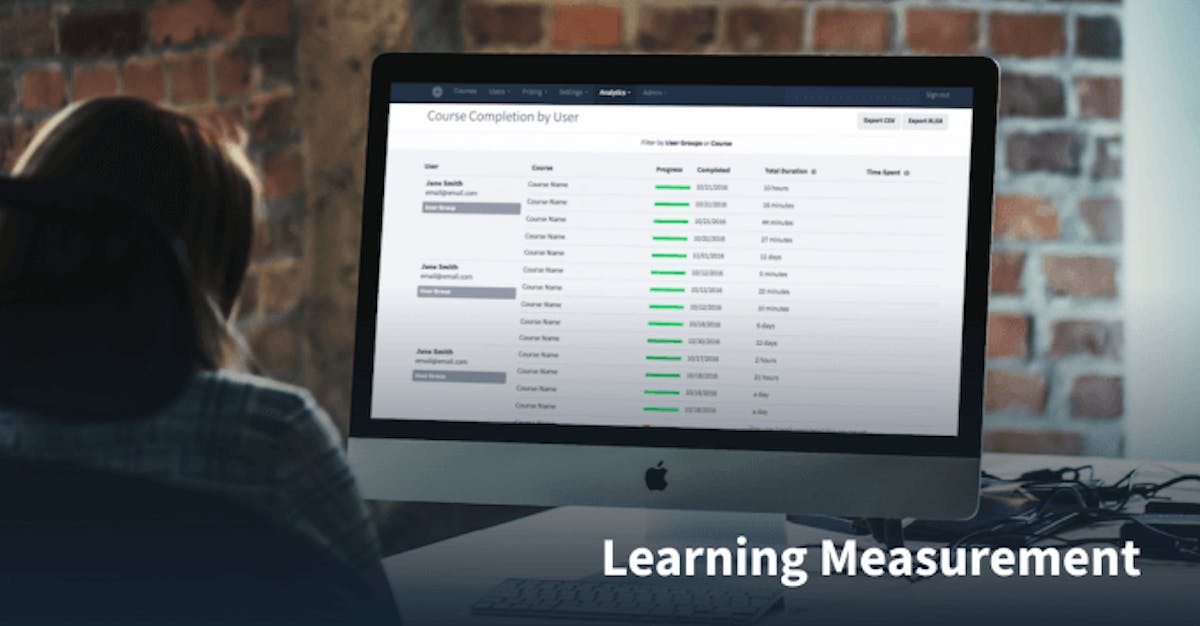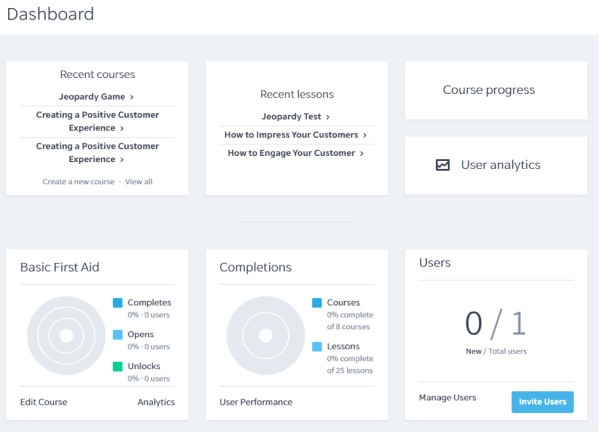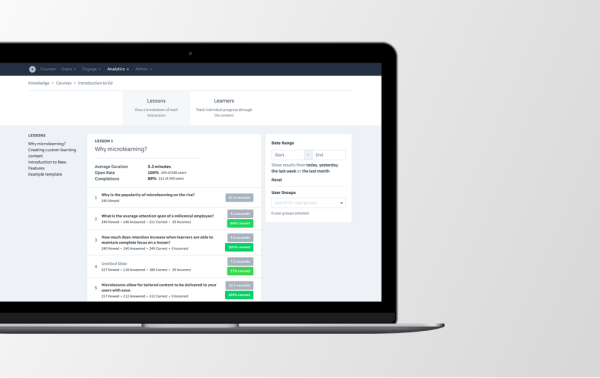Learning Measurement

Recent statistics show that staff training has increased. For example, in larger U.S. companies, the average number of training hours is roughly 103 (2020), a big increase from 42 (2017). Perhaps your company is part of this trend. The question is, does your employee training include a learning measurement protocol that justifies this continued budget increase?
What is Learning Measurement?
To put it bluntly, your employee training program needs to prove that it is worth the resources that are given to it. In other words, it is working, getting the results, and meeting the goals. No one is interested in your say-so (sorry!). They want concrete figures. Employee time tracker apps can be used to track how employees are spending their time on different tasks, including training. And fortunately, learning management systems (LMS), such as EdApp, come with built-in analytics for elearning development and corporate learning. Let’s take a look at some of them.
Start Using The Best Learning Measurement Platform
Analytics for employee learning measurement
Your course management system automatically collects a wide variety of subject-matter data points that can be used in employee training and development. This information is available through your cloud-based learning management platform performance dashboard.

Completion Data
This data category measures how many types of training lessons within a course were finished. The data reflects both individual and group completion rates. It also provides information about the average number of lessons completed in a course as well as the number of required lessons done and needed to train workers. This data can be exported for use in reports and presentations.
If you have employees who have started a course but have not completed it yet, you can send them reminder messages to help enforce completion.
Performance Data
Completing courses is great but your learning measurement protocol needs to assess your employees’ knowledge and skills, competency, and how well or poorly they performed. That is, how much learning actually happened?
In this category, your LMS provides information about the learning activities of an individual such as lesson scores, attempts, average scores, and stars earned. It also rates the highest and lowest performing courses, groups, and users. Again, this data can be exported for use as needed. Are there any users who have logged in but not begun any course? Send them a ping to remind them to get started on their compliance training and other training materials.
Registration & Login Data
Date and activity tracking is the function of this data category. Points include user registration date, last login date, and the number of visits. You will be able to see employees who have never logged in and those with low completion rates, so you can send them messages to get going. As usual, this data is exportable.
Other Data
The items in this category can be combined with data items in other categories to get a broader understanding of your employee training.
For example, one of the data points in this category is “Total number of lessons in a course”. Combine that with items such as “Average number of lessons completed in a course across a user group”; “Number of required lessons completed”; and “Total time spent in lessons”. This can guide your course planning in terms of the number of lessons and the length of each lesson. You may find that your employees do better when courses have a greater number of lessons based on microlearning and micro teaching. On the other hand, the data could show that your trainees prefer courses with fewer but longer lessons. It could also show that they prefer lessons that apply employee engagement like gamification or they do better on short quizzes instead of long assessments.
The hidden power of learning measurement
The main reason your training should have a learning measurement protocol is accountability. Accountability is the hidden power that can make or break workplace training programs.
Learner accountability
A common mistake of educators is thinking that they are the main reason for learner success. When I first began teaching, I thought that the ratio was 80% (me)—20%(the learner). After a while, I understood that at best, it is a 50-50 proposition. On any given day in any given lesson during any given activity, I can do my best to approach my 50% share. After that, it is up to my learner. The more I can create a culture of learner accountability, the more my learners will be motivated to do their best to give their 50%.

An article in the Harvard Business Review calls this “making dignity the foundation”. Their point is that “dignity, rather than surveillance” should empower learning. That really resonates with what I have found. Providing your employee trainees with objective, learning measure data is an effective way to work via dignity. Analytic data is not personal or subjective. When results are poor, there is no feeling that “my manager has it in for me”. When results are great, no one feels that the boss is exaggerating out of favoritism. This puts the focus on fairness, another aspect of dignity.
Analytic data gives concrete, reliable points showing where learners are meeting expectations and where they are not. There is no blame game, just an opportunity to do better. Overall, this approach will increase course completions and better performance rates.
Corporate accountability
I opened this article with a short comment about budgets. Time to get back to that. Your employee training program is costing resources. Its continuation and/or expansion is only justified if your employees are getting the training they need.
One illusion many organizations operate under is that having an employee training program means that the program is effective. Often, they are mistaken and thus shocked when workers do not have the needed information and/or skills.

Learning measurement analytics give you the facts and figures to objectively show that your training program is working well. More importantly, however, it gives you the information needed to improve results. No matter how excellent a workplace training program is, times and needs change. This data allows you to reflect on what is working, what isn’t, and make improvements as required.
In addition, analytics give managers timely opportunities to get involved. If your employees are not doing well, you know it in real-time, not months down the road when nothing can be done. Daily reports allow you to connect with your workers ASAP, finding out how you can better support their learning to make real differences in the outcomes. (And if some of your bosses don’t think this is part of their job description, time to get them involved in some managers training.)
An LMS makes learning measurement easy
The best part of all is that measuring learning is not the dreaded, time-consuming process that it once was. And since your EdApp learning management system (LMS) is a mobile learning platform, it is at your fingertips to give you details whenever and wherever you need them.

Outside sources:
Author
